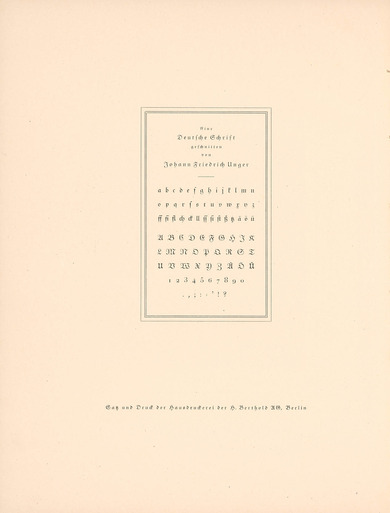Unger Fraktur
Unger Fraktur
During the enlightenment and the French Revolution, many European writers and publishers began to push for a clear, simple Fraktur. This impulse gave rise to the development of a “new kind of German letters” by the well-known printer and publisher Johann Friedrich Unger and his employee Johann Christian Gubitz. The first type sample appeared in 1793.
Unger himself considered the typeface a compromise: in spite of his personal efforts in support of the Latin Antiqua letters, Unger was well aware that German readers were partial to their familiar Fraktur. Thus his attempt to make them typographically simpler. For his design he received a Prussian privilege, which was put to good use until his operation was dissolved. Though it had been all but forgotten, the Unger Fraktur experienced a renaissance in the early 20th century.

